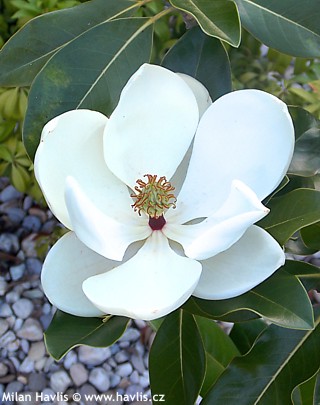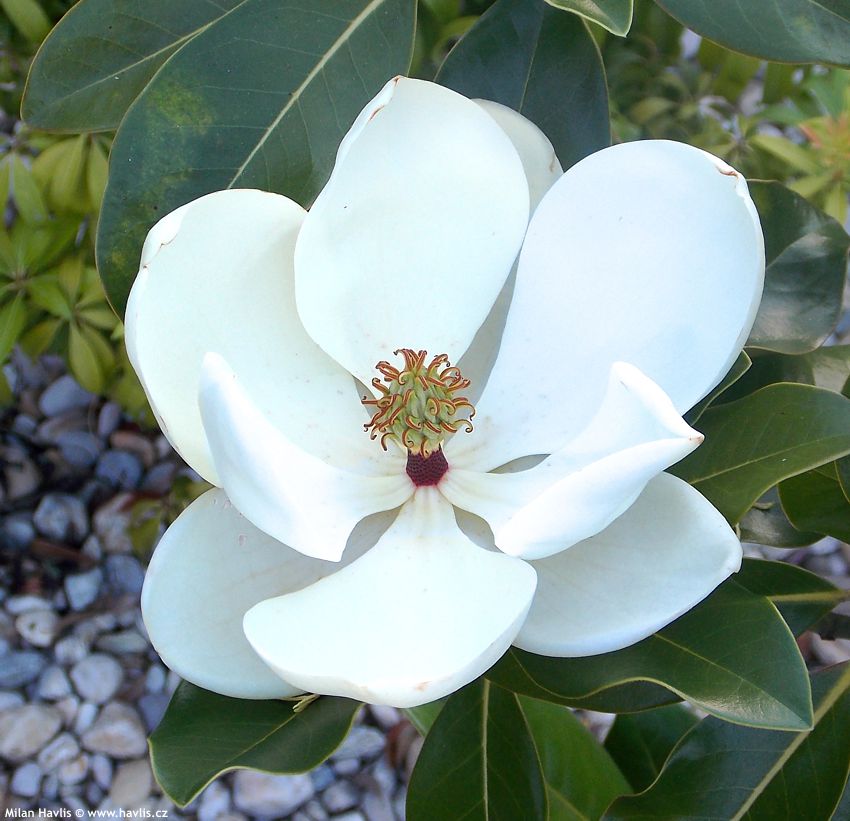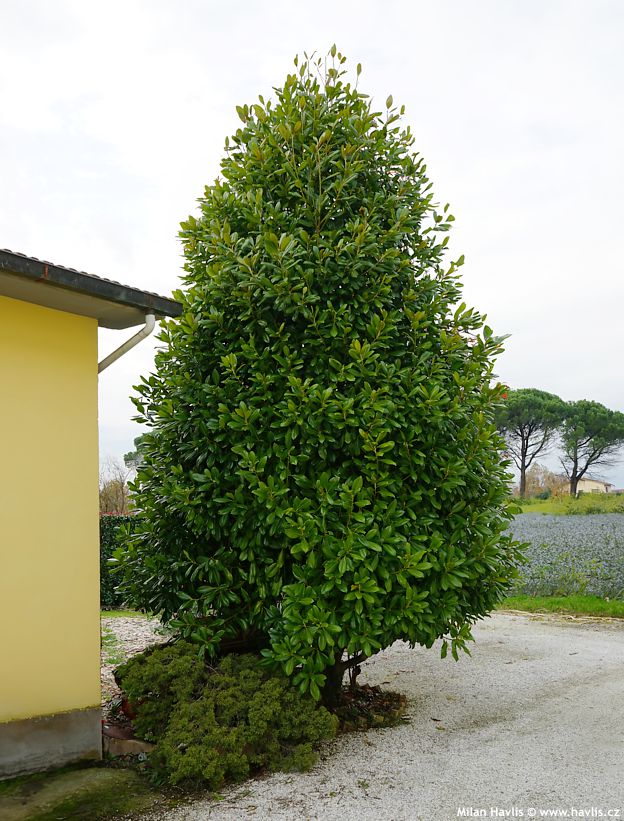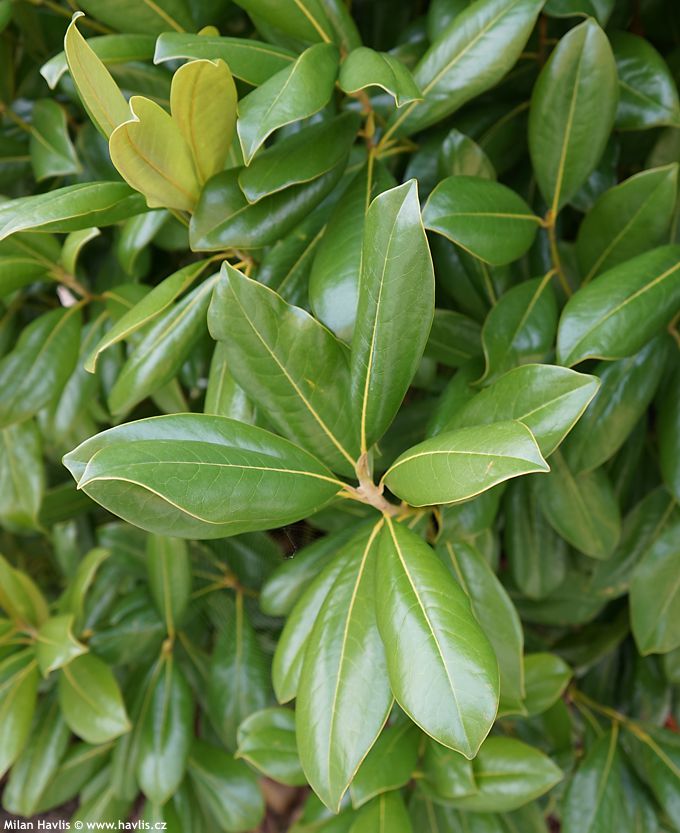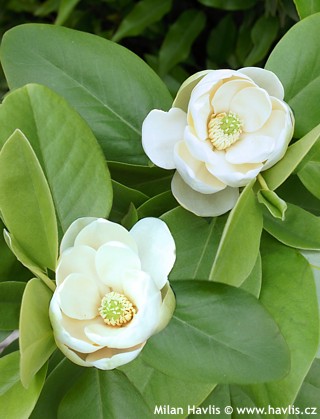Magnolia grandiflora 'MARYLAND' southern magnolia, bull bay
Evergreen magnolias are the queens of flowering trees. We choose the most beautiful and at the same time the hardiest varieties available. MarylandMarylandwhich offers something unique – different leaf colour as it is a cross between magnolia grandiflora and magnolia virginiana. Thanks to its first parent the foliage is reliably evergreen, and thanks to the latter the leaves are not rusty brown beneath but light green. Now a little note we cannot give a miss – its more correct name is Magnolia ‚Maryland‘ but for the sake of easier classification we use the full latin name including ‘grandiflora’ which is accepted as synonym.
Maryland magnolia produces large, creamy white flowers just like any other bull bay magnolia. They are about 20-25 cm across and open one by one from end June until mid to late August in zone 6. Their perfume is unbeatable – sweet and strong with a hint of citrus zest. The leaves are evergreen, leathery, large and glossy, deep green on the upper side and light olive green on the reverse. Yes, this hybrid lacks the rusty brown, suede-like indumentum on the undersides. It makes Maryland magnolia a perfect choice for those who prefer the green overall appearance of the plant.
It grows quite fast and branches well even without pruning. If however you feel you need to prune it do so from mid till late spring, bearing in mind that it will probably not flower on the pruned wood for one season. Evergreen magnolias require slightly acidic soil, very rich in humus, moist but well-drained. They benefit from rooting through clay soil in the lower parts of the ground on which they feast for nutrients. A good layer of mulch is necessary to retain moisture and in order to avoid temperature swings. It does not like root disturbance.
We have grown this variety in the Czech Republic successfully for almost ten years now and can confirm that it withstood severe winters down to -27°C with no physical damage, not even signs of sunburn. Just avoid locations with dry, cutting winds in winter. As it is evergreen, it needs moisture all year round so in winter provide extra watering in frost-free periods. Hardy to USDA zone 5b.
Last update 22-11-2008; 1-1-2014; 17-02-2022

































